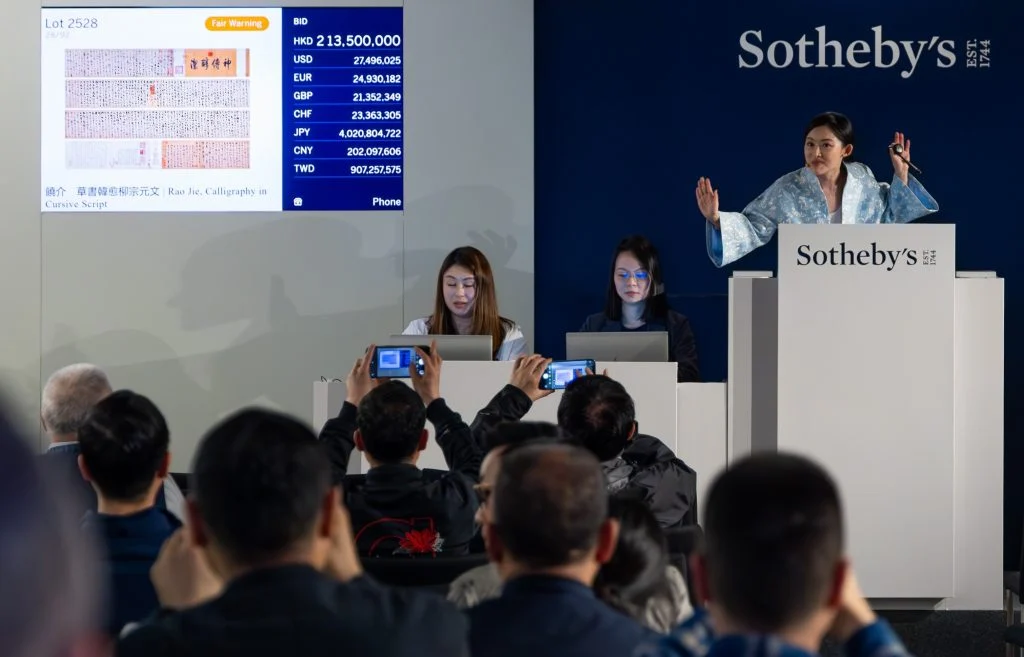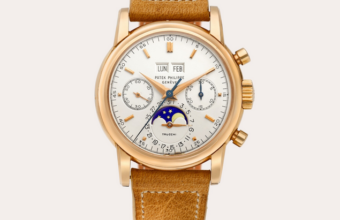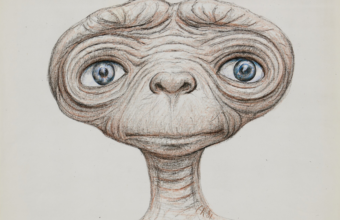A 10-metre Chinese calligraphy scroll has sold for $32 million after the longest ever single lot sale seen at Sotheby’s Hong Kong.
For 95 minutes would-be buyers fought for the right to walk away with a Yuan dynasty scroll written by calligrapher Rao Jie.
The battle sent the price rocketing to 21-times its estimate with an unnamed buyer paying $32 million (HK$250 million) to own the piece which has been in some of the most important collections of Chinese art.

Rao Jie’s work is highly regarded and this is the largest known surviving scroll. Image courtesy of Sotheby’s.
Auctioneer Xichu Wang handled 200 bids before awarding the sale to a phone bidder.
The scroll is extremely well known, and has been in Chinese imperial collections, but while much of its 7-century life is well documented it had recently been out of sight.
Rao Jie was a caligrapher who worked during the Yuan dynasty (1271 to 1378).
This 20-foot roll is his longest piece.
“Works from the Yuan Dynasty are particularly prized for their rarity, not to mention Rao Jie’s Calligraphy in Cursive Script is a rare treasure,” Steven Zuo, head of fine classical Chinese paintings and calligraphy at Sotheby’s, told Artnet News.
A $1.3-million to $2.6 million pre-sale estimate proved massively conservative.
Rao’s work bore over 100 collector’s seals that help to chart its journey.

A detail from the scroll, which has been in the collections of Chinese emperors. Image courtesy of Sotheby’s.
Its content is a transcription of two essays from the mid-Tang period in the 7th to 10th centuries.
The texts are also interesting to collectors, and have had resonances throughout Chinese history.
Among the scroll’s owners were Emperor Qianlong and a cousin of Puyi, the last emperor of China. From him it was sold to a Japanese collector, and was sold at Sotheby’s Hong Kong from a private Japanese owner. It was recorded in imperial catalogues in the 18th century and selected for copying as one of the treasures of the collection.
Observers see the sale as a sign of confidence in the Chinese art market. Certainly, US tariffs on the People’s Republic of China don’t seem to have dented the spirits of buyers at the sale.
When it was sold to Japan after the 1911 revolution that ended Qing rule, it was believed the money raised might finance an imperial restoration.












